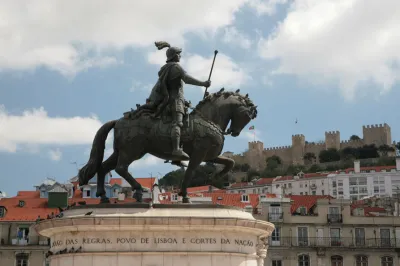
Praça de Figueira is a large square in the centre of Lisbon, one of three in the Baixa district. The name translates as fig tree square, although there is little sign of the original trees. The square was created in the 18th Century after the Lisbon earthquake of 1755 had destroyed the buildings that had stood on the site beforehand (as well as much of the rest of the city). It had previously been the location of Lisbon’s main hospital; the Real de Todos os Santos. Plans to rebuild the hospital never materialised and the site was left as a public square.
Praça da Figueira came into being some years after the earthquake and was home to one of Lisbon's main outdoor markets. Towards the end of the 19th century the market here had become a semi-permanent fixture with a covered area. It was only in 1949 that the market was torn down and replaced by the Praça da Figueira we see today.
This charming square has a wide open feel to it. The buildings are mostly just four or five storeys high and date from the time of the square’s creation. At street level, these buildings house a number of small shops as well as a few cafes. It is an important transport hub, close to the city’s main train station Lisboa-Rossio, and many of Lisbon's bus routes pass through one side of the square.

The centre of the plaza features a large bronze statue of a man on a horse. This man is King João I of Portugal, who secured Portuguese independence from Spain and reigned here for nearly 50 years from 1357 to 1433. He allied with the French in the Hundred Years' War against the English-supported João of Aviz, to cement his place on the throne. Afterwards, however, he made an alliance with the English by marrying Philippa of Lancaster, daughter of John of Gaunt.
The Anglo-Portuguese alliance, created by this union lasts to this very day.